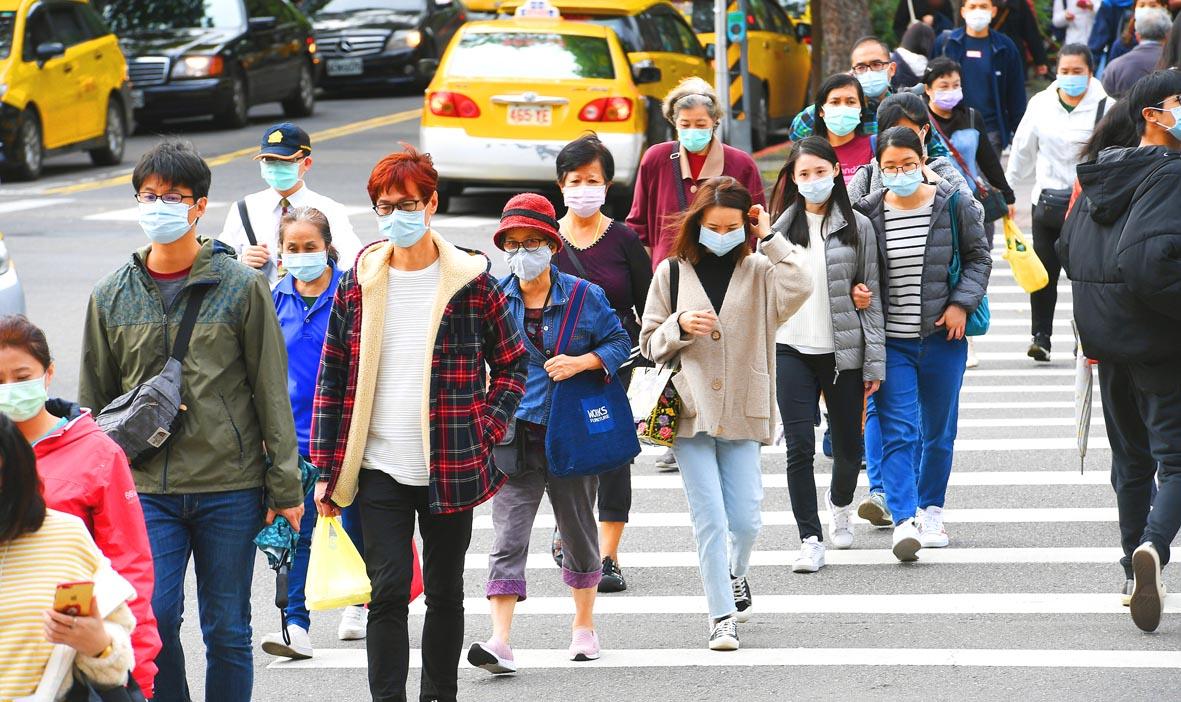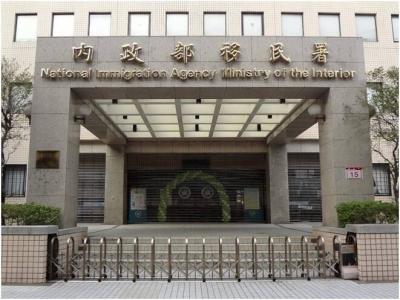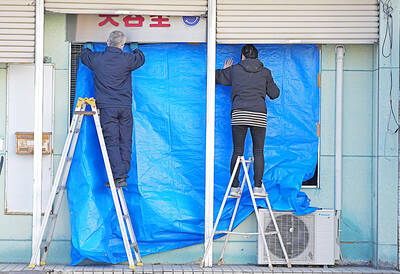Treating migrant workers who have tested positive for COVID-19 also protects Taiwanese from infection, the Central Epidemic Command Center (CECC) said on Sunday.
Centers for Disease Control (CDC) Deputy Director-General Chuang Jen-hsiang (莊人祥), who is the CECC’s spokesman, made the remark when asked why the government is spending an estimated more than NT$86 million (US$3.01 million) on medical treatment for 108 Indonesian migrant workers with COVID-19.
When he was asked whether it is reasonable for the government to spend so much on their medical fees, Chuang said providing medical treatment for them is safeguarding the public’s health.

Photo: CNA
The CECC on Sunday reported 20 confirmed cases among Indonesian migrant workers, bringing the total number of people from the country who have tested positive for the disease to 133, surpassing the previous high of 116 imported cases from the US.
The average medical cost for treating each confirmed COVID-19 case is about NT$2.1 million, but the majority of the migrant workers, who are young and have had mild or no symptoms, were hospitalized for shorter periods of time than those with more severe cases of COVID-19, so the average medical cost has been about NT$800,000 per person, Chuang said.
As COVID-19 is a category 5 notifiable communicable disease, the cost of treating the disease can be paid out of a government budget allocated for COVID-19 prevention, Chuang said, adding that allowing them to enter the workforce after ensuring they have fully recovered from the disease can prevent others from becoming infected.
Migrant workers are important to the nation’s social welfare services and other industries, and they can continue to work after recovery, so there is nothing inappropriate about treating them, he said.
Democratic Progressive Party (DPP) Legislator Cheng Yun-peng (鄭運鵬) yesterday wrote on Facebook that given the seriousness of the disease, the law permits the government to order infected people to be isolated for treatment, and based on the principle of equal rights, it should be responsible for paying for mandatory treatment.
In related news, the Ministry of Health and Welfare has deemed a controversial mass COVID-19 antibody study in Changhua County to be a breach of the Human Subjects Research Act (人體研究法), Department of Medical Affairs Director-General Liu Yueh-ping (劉越萍) said yesterday.
The Changhua Public Health Bureau and National Taiwan University public health researchers conducted the study from June to August, Liu said.
The ministry could fine the Changhua Public Health Bureau up to NT$1 million, but the final amount would be announced in two weeks, she said.
The Ministry of Education would have to decide whether to fine the university’s College of Public Health, she added.

A small number of Taiwanese this year lost their citizenship rights after traveling in China and obtaining a one-time Chinese passport to cross the border into Russia, a source said today. The people signed up through Chinese travel agencies for tours of neighboring Russia with companies claiming they could obtain Russian visas and fast-track border clearance, the source said on condition of anonymity. The travelers were actually issued one-time-use Chinese passports, they said. Taiwanese are prohibited from holding a Chinese passport or household registration. If found to have a Chinese ID, they may lose their resident status under Article 9-1

Taiwanese were praised for their composure after a video filmed by Taiwanese tourists capturing the moment a magnitude 7.5 earthquake struck Japan’s Aomori Prefecture went viral on social media. The video shows a hotel room shaking violently amid Monday’s quake, with objects falling to the ground. Two Taiwanese began filming with their mobile phones, while two others held the sides of a TV to prevent it from falling. When the shaking stopped, the pair calmly took down the TV and laid it flat on a tatami mat, the video shows. The video also captured the group talking about the safety of their companions bathing

PROBLEMATIC APP: Citing more than 1,000 fraud cases, the government is taking the app down for a year, but opposition voices are calling it censorship Chinese Nationalist Party (KMT) Chairwoman Cheng Li-wun (鄭麗文) yesterday decried a government plan to suspend access to Chinese social media platform Xiaohongshu (小紅書) for one year as censorship, while the Presidential Office backed the plan. The Ministry of the Interior on Thursday cited security risks and accusations that the Instagram-like app, known as Rednote in English, had figured in more than 1,700 fraud cases since last year. The company, which has about 3 million users in Taiwan, has not yet responded to requests for comment. “Many people online are already asking ‘How to climb over the firewall to access Xiaohongshu,’” Cheng posted on

A classified Pentagon-produced, multiyear assessment — the Overmatch brief — highlighted unreported Chinese capabilities to destroy US military assets and identified US supply chain choke points, painting a disturbing picture of waning US military might, a New York Times editorial published on Monday said. US Secretary of Defense Pete Hegseth’s comments in November last year that “we lose every time” in Pentagon-conducted war games pitting the US against China further highlighted the uncertainty about the US’ capability to intervene in the event of a Chinese invasion of Taiwan. “It shows the Pentagon’s overreliance on expensive, vulnerable weapons as adversaries field cheap, technologically